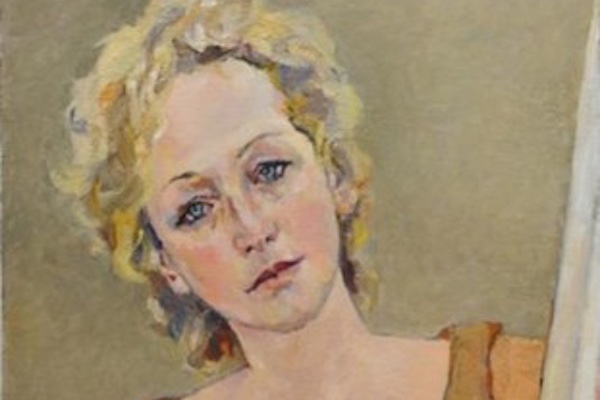Lubov Lemkovitch on Portraiture
by Emily Jaeger, Features Editor

In her portraits appearing in this month’s issue, Vol. IV #9, Lubov Lemkovitch portrays up-close the subtle strength and interior emotions of her female subjects. Trained as an artist in Kishinev and Israel, Lemkovitch has exhibited her work internationally, including exhibiting at Art About, an Israeli Worldwide Exhibition in Munich, Germany and at the Merlino Bottega D’arte galleria in Florence, Italy. I connected with Lemkovitch across continents to learn more about her artistic process and personal angle on portraiture.
Born in Kishinev, Moldova, Lemkovitch attended art school in her hometown. She soon abandoned the field, however, to pursue something more practical: civil engineering. It wasn’t until years later, when she immigrated to Israel in 1991, that Lemkovitch returned to painting, “Only when I immigrated to Israel, did I finally begin to feel at home. I was achieving my dreams in so many parts of my life—I felt a strong desire to begin painting again.”
It took another eleven years for Lemkovitch to find the right teacher. After many false starts which left her discouraged—she wasn’t reaching a new level of artistry—Lemkovitch met the Russian Socialist portraitist, Abraham Bykov: “He said to me, ‘We must start from the beginning!’ I agreed and I began to learn….When I work, I still think with his words.”

Under Bykov’s mentorship, Lemkovitch studied a wide range of portraitists and exercises to improve her craft and critical eye, techniques which she still uses today, “Abraham influenced my art significantly and totally. I studied with him for five years, up to his last day.” Her only departure from her teacher, Lemkovitch explains, is her knowledge of contemporary art.

Lemkovitch’s years as a civil engineer remain, perhaps, imprinted on her portraits’ architectural intuition. Each painting is designed to draw the viewer into a moment of the subject’s subtle emotions. In Elena, for example, the subject seems either to be uncomfortable or recalling a sad memory. Lemkovitch describes her process of capturing her subjects’ emotions based on a mixture of the left and right hemispheres of the brain: “You must build the correct proportions (left brain) while simultaneously transmitting the spirit and the mood portrayed (right brain).”

While Lemkovitch paints her subjects’ faces with more nuanced detail, their clothing is often quite abstract—a method she uses to remove any distractions from the main emotion of the piece. Once the image of her subject is nearly complete, Lemkovitch turns to the subject’s environs: “I think a lot about the environment, but there are no rules.” In Irina, Lemkovitch visually highlights the face with contrasting blocks of bold color, which, at the same time, seem to echo the subject’s contemplative attitude.

The majority of Lemkovitch’s work is in portraiture; however, she has also ventured into still-life and abstract painting. These pieces, she claims, help activate the type of abstract thinking she employs to depict clothing and environments in her portraits, also relegated to the right hemisphere. She doesn’t like to depart from portraiture for too long though:
The portrait can express and cause a much stronger emotional reaction than, for example, a still life, abstract painting, or landscape. The human face can tell so much about a person, and that’s what makes exciting work.”
Copyright 2016 Woven Tale Press LLC. All Rights Reserved.

